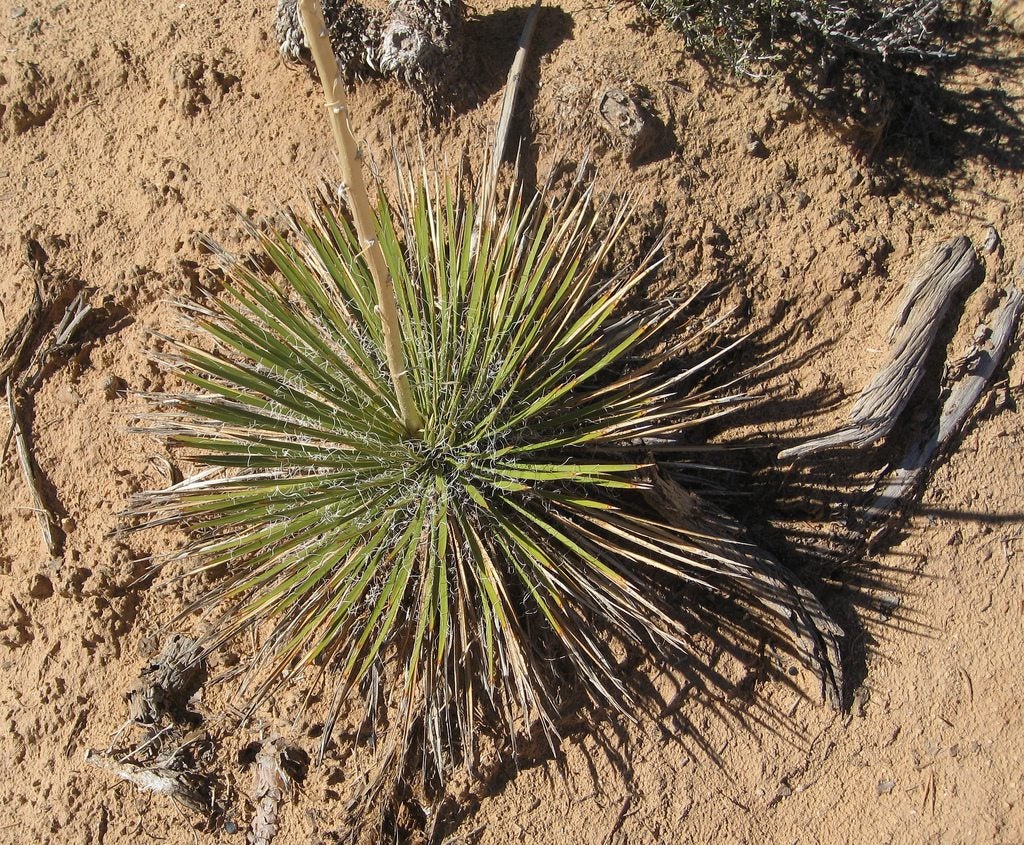Yucca Soil: Learn About Soil Mix For Yucca Plants
When growing yucca, soil is the most important consideration. It tolerates extreme conditions and rarely requires water, fertilizer, or pruning. Super easy-care if the soil is right.


Yucca is a distinctive evergreen plant with rosettes of stiff, succulent, lance-shaped leaves. Shrub-size yucca plants are often the best choice for the home garden. Some varieties such as Joshua tree or Giant yucca are actually woody-trunked trees that reach heights of 10 to 30 feet (3-9 m).
Yucca plants produce clusters of white or off-white blooms. A lazy gardener's dream, yucca is a tough plant that tolerates extreme conditions including dry soil, punishing sun, intense heat, and harsh winds, which means it rarely requires water, fertilizer, or pruning. In general, too much care is worse than no care at all.
However, the critical factor that can't be ignored is soil.
Type of Soil for Yuccas Grown Outdoors
In its natural environment, outdoor yucca plants thrive in dry, sandy, gritty soil where most plants won't grow.
This desert plant absolutely will not tolerate wet soil and too much moisture invites big trouble in the form of rot, a fungal disease that nearly always results in death of the plant. Unlike most plants that prefer rich, fertile soil a little on the acidic side, yucca likes its soil poor, dry, and alkaline.
If you're thinking about growing yucca outdoors, you may need to improve drainage by incorporating a generous amount of sand or gravel into the soil.
Yucca Potting Media for Plants Grown Indoors
Unless you live in a hot, dry climate, you're probably more interested in growing yucca indoors. Small, spineless varieties are attractive houseplants that are relatively easy to maintain.
Sign up for the Gardening Know How newsletter today and receive a free copy of our e-book "How to Grow Delicious Tomatoes".
Special potting soils formulated for cacti and succulents are an option for indoor yucca plants, but they may be too rich and often don't provide the drainage this plant requires.
A bag of inexpensive potting mix makes a good base for a simple homemade yucca potting media. A clean garbage can or a wheelbarrow works well for mixing the potting media. It isn't necessary to measure exactly and general proportions are good enough.
Start with four parts of regular peat-based potting mix and mix in five parts perlite-- a lightweight substance that promotes healthy drainage. Wear a disposable mask; perlite dust isn't good for your lungs. Finish by mixing in one part coarse, horticultural-grade sand.
Don't use non-horticultural sand, which isn't clean and may contain salts that can harm the plant. An alternative mix is a simple combination consisting of one part horticultural sand, one part perlite or lava gravel, and one part leaf mold or compost.
Yucca is a slow grower that doesn't need frequent repotting but be sure to plant your yucca in a sturdy, wide-based container; it may become top-heavy as it grows.

A Credentialed Garden Writer, Mary H. Dyer was with Gardening Know How in the very beginning, publishing articles as early as 2007.